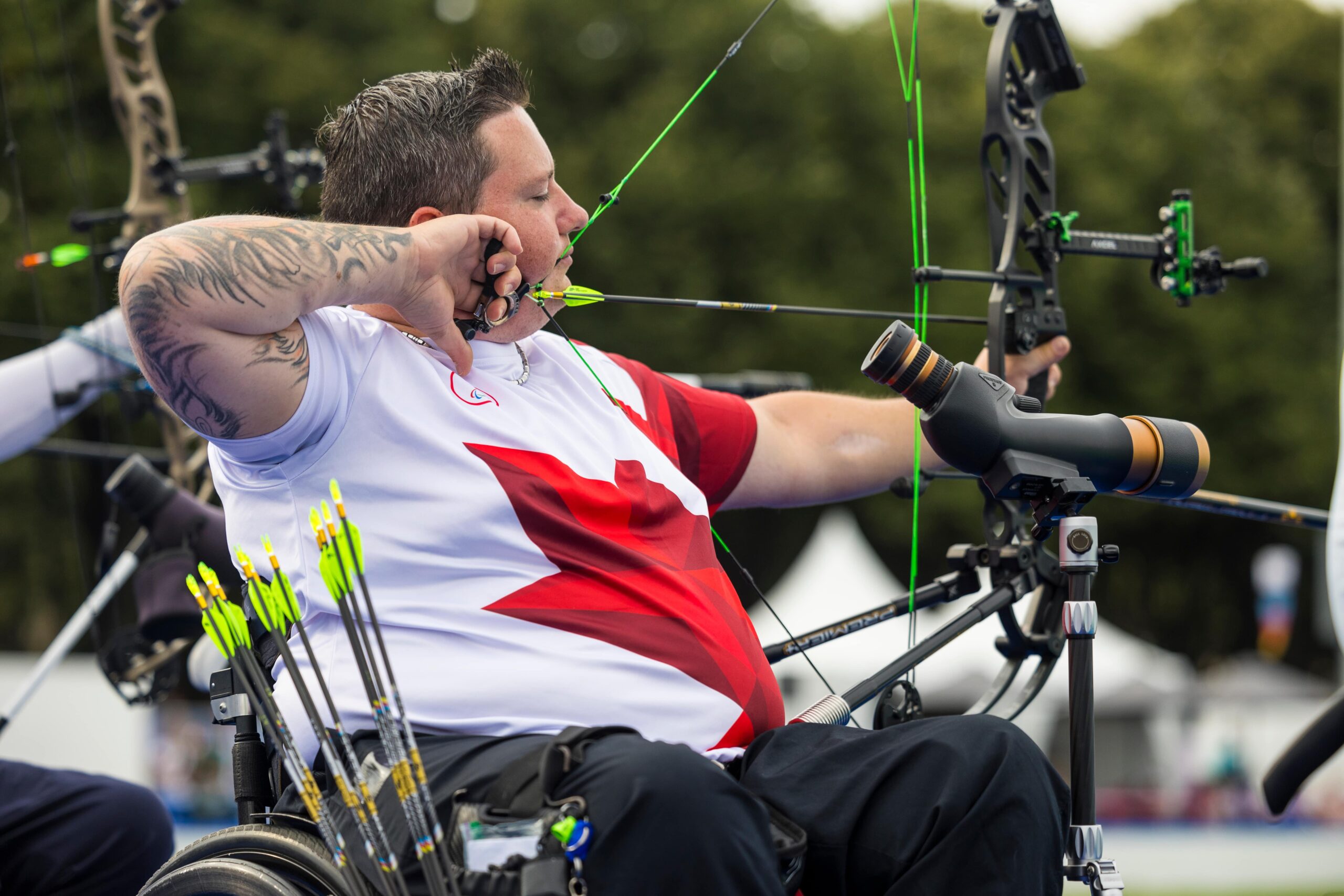
Para archery
Summer Sports
Para archery was one of the original sports at the inaugural Paralympic Games in 1960. Male and female athletes with physical impairments can compete either standing or in wheelchairs. There are three classifications, two for wheelchair and one for standing. The events are compound bow, recurve and team.
While archery was historically used for combat and hunting, today it is primarily a sporting activity.
The objective of the sport is to shoot arrows accurately at a target marked with 10 concentric rings. A hit in the centre ring (bull’s eye) scores 10 points, with the following zones decreasing in point value until the outer ring, which is worth one point.
Archery competitions are held both indoors and outdoors. The face size of the target and distance from the archer vary depending on the competition. In outdoor competition, the archer shoots at a target 70 metres away. In indoor competition, the distance is 18 or 25 metres. Target faces range in size from 40cm (for 18 metre distance) to 122cm (for 60 to 90-metre distances). An archery competition is divided into ends of three or six arrows. Archers have a set time limit in which to shoot their arrows and at the completion of each end, the scores for each arrow are summed up. The final score is the sum of all ends played.
The Paralympic competition format is identical to that of the Olympic Games. Archers shoot 72 arrows from a distance of 70 metres at a target of 122 cm. A perfect score is 720.
The World Archery Federation is the international governing body for archery and sets the rules of competition. Archery Canada is Canada’s National Sport Organization.
Archers compete in the following two sport classes at the Paralympic Games:
"*" indicates required fields